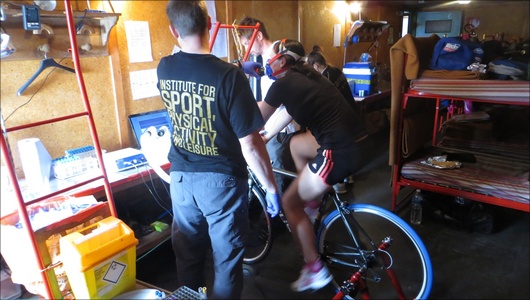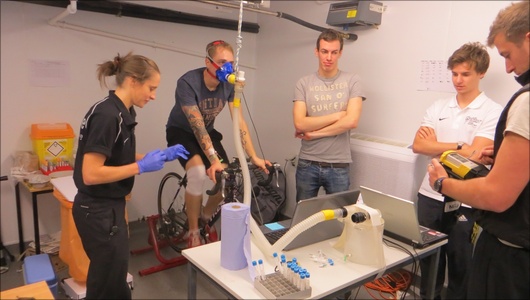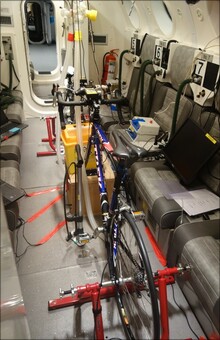Over the past few years members of the Defence Medical Services have been investigating the adaptation to high altitude (HA). The topic is of military importance, even modest altitude has a significant effect on available PiO2 and therefore an impact on oxygen delivery. The US military suffered a number of altitude related problems during the initial phases of the conflict in Afghanistan and military teams may be exposed to HA if needed to rapidly deploy to altitude or even treat casualties at high altitude (including in transit by air).
Whilst trips to the mountains are not unappealing, conducting good scientific investigation in this environment is a challenge. Being able to model the HA environment in a laboratory would enable us to standardise exercise, diet and other variables far more effectively.
An artificial HA environment can be generated by creating a lower pressure thus lowering FiO2 (hypobaric hypoxia, HH). This is a highly specialised technique requiring complex chambers and skilled operators. Investigators and subjects are exposed to the same low pressure giving rise to a risk of decompression illness (DCI) and potential long term health issues which mandates tight controls on fitness of subjects and duration of exposure. Within the UK the RAF operate such a chamber at the Centre for Aviation Medicine, RAF Henlow.
An alternative technique is to replace oxygen with nitrogen, thus reducing FiO2 to mimic a specific altitude (normobaric hypoxia, NH). This technique is readily available and widely used by sports scientists to test altitude training protocols. Effectively all that is required is a sealed room and it is therefore easier for investigators (or unwell subjects) to move from the chamber to the lab outside.
Finally, the other option is to locate the laboratory at HA, in a "real world" environment. Within Europe there are a variety of mountain huts at altitudes up to 4559m, some easily accessible by cable car others more difficult to access but serviced by helicopters to carry kit and personnel to the huts.

There is surprisingly little published data on the comparison of the three "high altitude" environments. Most of the published studies have compared NH to HH and to some extent this is the important question for setting up lab based studies. These studies have generally found HH to produce a more significant physiological stress. Part of this may be methodology as PiO2 is related to FiO2 by the equation PiO2 = (FiO2xPB) - PH2O. This slightly reduces the PiO2 for a given FiO2 in HH environments vs. NH. One additional, but potentially significant, effect could be the overall anxiety and physiological stress of being in a hypobaric chamber. This is a small chamber, subjects require a medical, have a brief on DCI and health risks and the investigators have to wear oxygen masks. This could be anticipated to have an effect on physiology and stress hormones.










